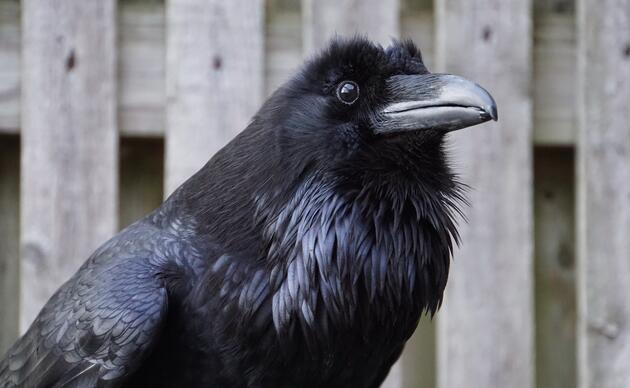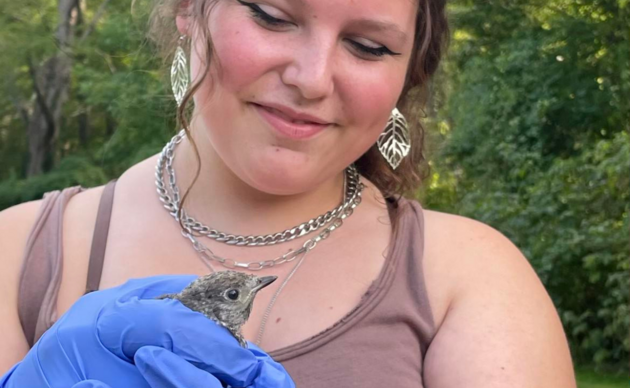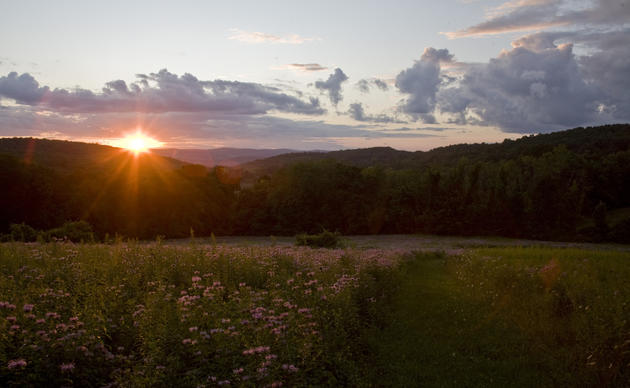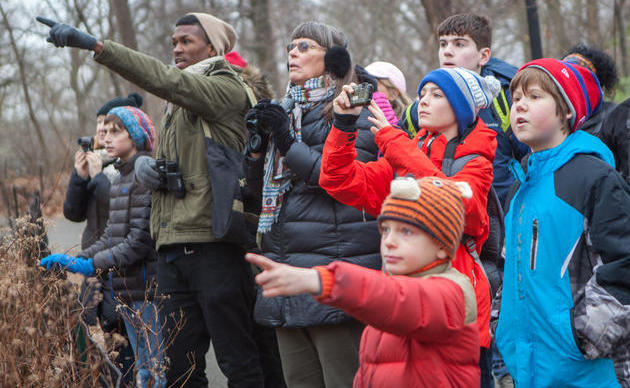Brought to Sharon Audubon Center: November 2003
Sex: Female
Injury: Cannot sustain flight
History: Lia was flown into Bradley International Airport in Hartford, Connecticut from The Raptor Center at the University of Minnesota. She had been in the care of veterinarians there since October 2000 before they decided to place her at the Sharon Audubon Center. She had suffered a broken right wing and had undergone multiple surgeries over a year’s time in an effort to heal the bone. However, the many surgeries and soft tissue trauma resulted in a reduction of wing extension and the inability to maintain sustained flight.
Lia was moved into the center’s largest outside aviary in November 2004 and has been a favorite among visitors. Because she remains such a nervous bird in captivity, Lia is not able to join the other resident raptors in education programs at this time.
Bald Eagle (Haliaeetus leucocephalus)
Did You Know? To catch fish, eagles will swoop down over the water and grab a fish out of the water with its talons. They eat by holding the fish in one claw and tearing the flesh with the other. Eagles have structures on their toes called spiricules that allow them to grasp fish.
Average Height: female 35 - 37 inches, male 30 - 34 inches
Average Weight: 10 - 14 lbs
Wingspan: female 79 - 90 inches, male 72 - 85 inches
Life Span: 15 - 20 years in the wild, but up to 30 years. The oldest captive eagle known lived 48 years.
Description: The Bald Eagle is easily distinguishable by its white head and tail with a brown body. An immature Bald Eagle has speckled brown plumage, developing its more distinctive colors at 2 - 3 years of age.
Call: Bald Eagles normally squeak and have a shrill cry, or grunting. They do not make the "eagle call" as heard on television. That famous call is the Red-tailed Hawk.
Range: The Bald Eagle’s natural range covers most of North America, including Canada and Northern Mexico.
Habitat: Bald eagles can be found along the coast and around lakes and rivers where there are plenty of fish to eat and tall trees for nesting and roosting.
How you can help, right now
Learn & Explore
Where birds thrive, people prosper. Help us transform local communities into places where birds flourish. Learn what you can do to nurture wildlife, nature, and conservation in Connecticut.
Support Our Work
Through land stewardship, science, education, and advocacy, we work to preserve habitat and protect bird species that are of state, national, and global concern. Your gift makes a difference.
Join Our Family
When you become a member of Sharon Audubon Center, you are protecting critical woodlands and a natural heritage for generations to come. Help us do great things.





